Fearful Leadership: Do You Suffer from It?
It’s a tough time to be a leader. What with the economy being so unforgiving, making smart business decisions is crucial. That’s true in terms of not only strategy (whether to change your service mix or move into a new marketplace) but also relationships (whether to fire the high-volume performer who drives you nuts or address the conflict head-on). All actions have consequences. So does lack of action. And with the margin for error so slim, you want to make sure you’re thinking as coolly and clearly as possible.

Valve-Body Bore Preparation
We’ve all been there. You get your bench set up to clean and inspect the valve body, pull the first retaining clip – and then it happens. The first bore you touch ends up having either a stuck end plug, valve, sleeve or – worse yet – all the above. Fast-forward a few steps and, what the heck, how did that O-ring get torn? Why do I always end up with sticking valves on the way back together?
The thing to keep in mind is that most valve bodies use aluminum castings that can dent, scratch and develop ridges very easily. Once this occurs, it can quickly lead to damaged components and lost time trying to repair them. The best place to start in avoiding this scenario is to understand why it happens.
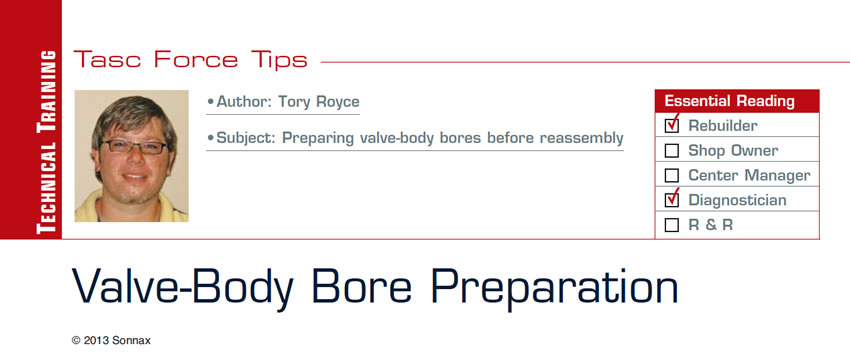
Fretting
The ASM Handbook on Fatigue and Fracture (Figure 1) defines fretting as: “A special wear process that occurs at the contact area between two materials under load and subject to minute relative motion by vibration or some other force.”
Fretting wear is usually associated with electrical contacts rather than non-electrical things, but fretting and fretting wear occur with both.
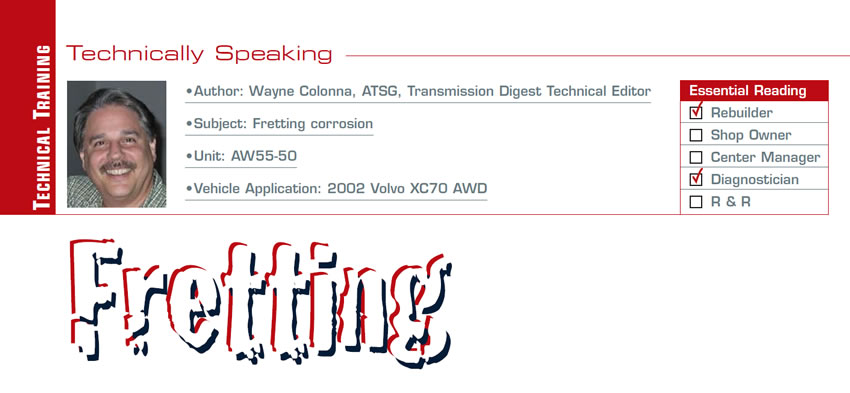
Choices
Business, as life itself, always seems to come down to the choices we make. I’ve found that we are usually presented with two options at a time, rarely more. It’s a matter of picking the best road to go down in almost any instance.
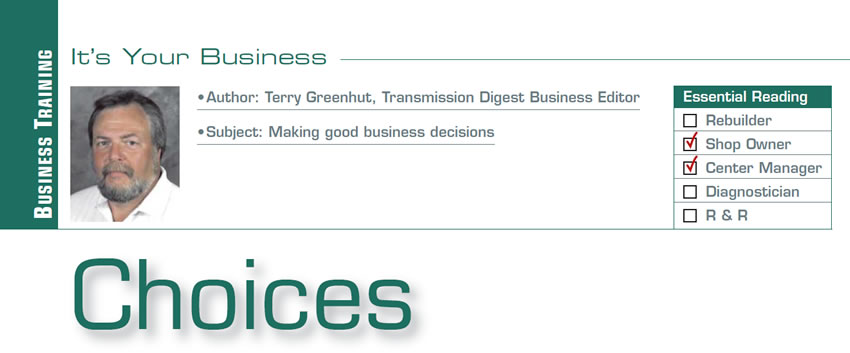
Magna Powertrain Transfer Cases, Part 2
In last month’s article we identified and explored the basics of the Magna Powertrain transfer cases found in late-model GM trucks. In this article we take an in-depth look at one of the three series of models available: the MP 1222, 1225 and 1226 models, using RPO (regular production option) code NQG.
Understanding the significance of the RPO codes on GM vehicles will make parts ordering simpler. Figure 1 shows the variations and descriptions of the NQG series of transfer cases. As these units are used in K1, K2 and K3 models of trucks, there are differences in input and output splines, chain size and number of pinions on the planets. These variations provide the torque capacity necessary to cover the different engine/transmission combinations for light-duty, heavy-duty and super-heavy-duty applications.
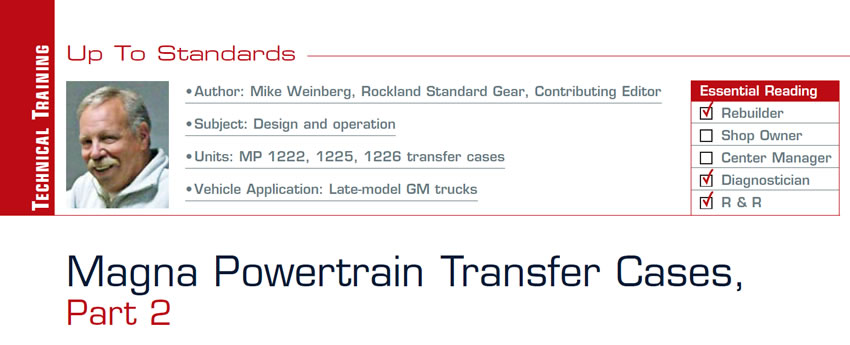
Last Impressions
The last impression your customer has of you is as important as, if not more important than, the first impression. Many times we get busy and take short cuts we know we shouldn’t. Car delivery is an easy one to neglect. You talk with any sales manager and he will tell you that the last step of any sale is the reassurance step. In this step, you reassure the customer that he has made the right decision about buying from you and ask for referrals. Car delivery is the reassurance step in the sale of a transmission repair. Proper car-delivery procedure accomplishes several things, but reassurance is the most important.
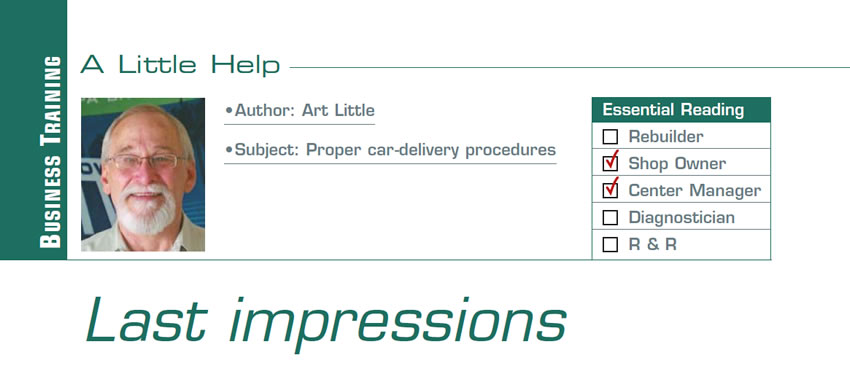
February 2013 Issue
In This Issue
Allison 1000/2000: Transmission fluid overheating or no engagements
Ford 5R110W: Solenoid failure
JR403E, 1988-98 Isuzu N-series trucks: Rear-lube failure
LCT1000/2000: Transmission overheats
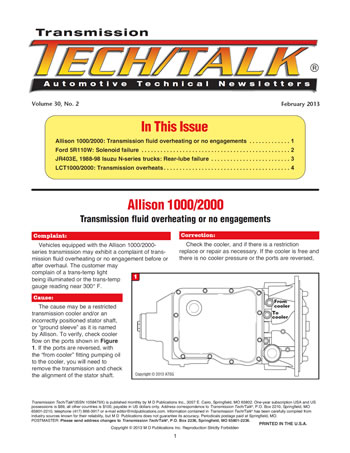
Rebuilding the 6R60 Converter
Ford introduced the 6R60 transmission in 2005, when it was originally used for Explorers equipped with the 4.6L gas engine. In 2008 and 2009, the 6R60 transmission also was used in some 4.6L F-150 pickups. The 6R60 transmission comes with a multi-plate, captive-clutch converter with a unique design. One single-sided clutch disc rests against the cover. This clutch disc has 12 tangs that engage the turbine arranged in groups of three around the disc’s outer diameter. The clutch disc is sandwiched between the cover and a two-sided clutch disc that is attached to the cover in six positions close to its inner diameter.
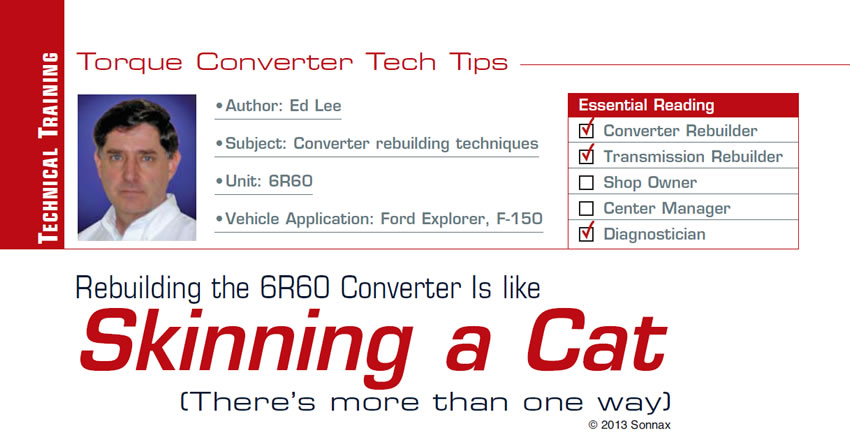
Sometimes I Wonder, ‘What Were They thinking?’
Case in point is a 1992 Ford Bronco (Figure 1) with a 5.8-liter engine and E4OD transmission. The vehicle came to our shop with shifting issues. The owner said he was driving along and all of a sudden it shifted down and then slammed back into gear, and then a short time later it shifted down again but this time would not upshift. He thought it was stuck in low, although it did not act up on the way to our shop that morning. The owner had recently bought this vehicle with some known issues. There was a rear-ABS lamp on and the Check Engine lamp was not on.
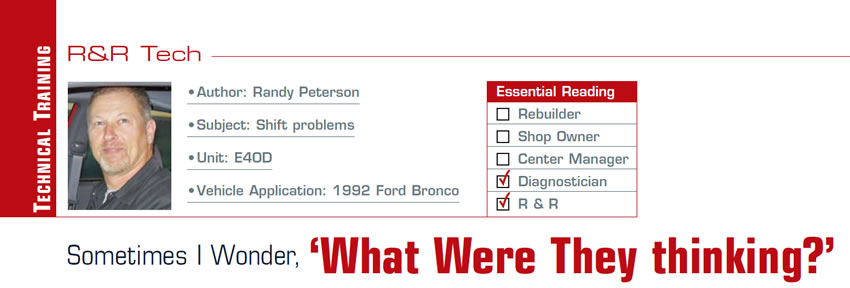
A One-of-a-Kind Saab No-Start
How often do you get to say this as a technician: “I have never seen this before”?
Such a day occurred for me recently when my customer had his 1991 Saab 9000 towed to our shop with a no-start complaint. Little did I know what I was in for! Spoiler alert: Do not look at the last two pictures yet; try to figure this one out first.
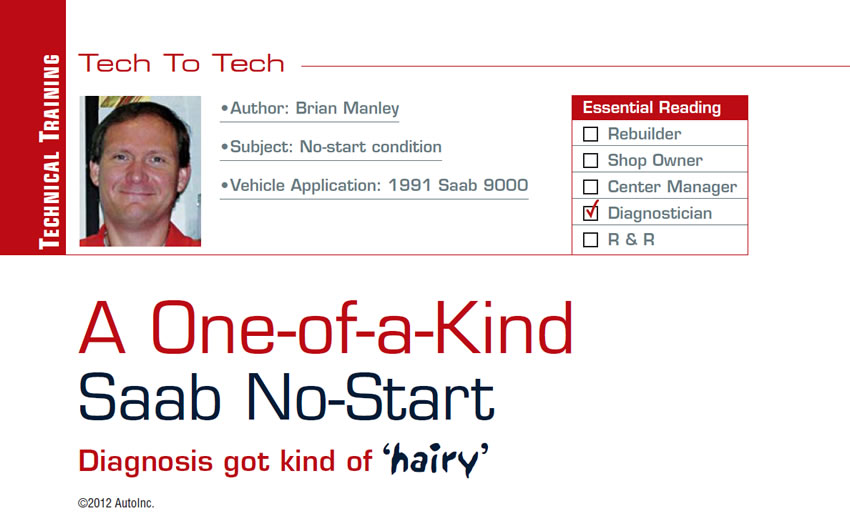
Try Answering Your Phone for a Change
I learned that there are opportunities at my fingertips to improve efficiencies, to increase sales and to provide better service. I learned that what I thought was happening on a minute-by-minute basis was actually pretty different from what is actually happening. Some things are worse, some are better, but most are different.

Going Nowhere Fast
Just recently my uncle backed out of his driveway with his 2003 Ford Taurus wagon (AX4N transmission), put it in drive and had no movement. He then put it in reverse and still had no movement. So there he was stuck in front of his house, going nowhere fast! And I must say that if you are going to experience a sudden no-move condition with your vehicle, there is no better place than in the front of your home. The vehicle was then taken to the good folks at R&J Transmission Service in Waldwick, N.J., where they did a great job taking care of my Uncle’s problem.

